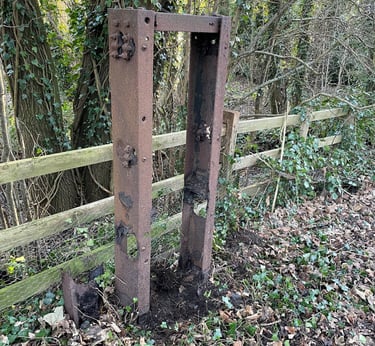Buildings and Landmarks
Farms
Elm Farm and Newbold Farm were two of the earliest buildings in the village. They appear on a map from 1806 when land enclosure was completed.
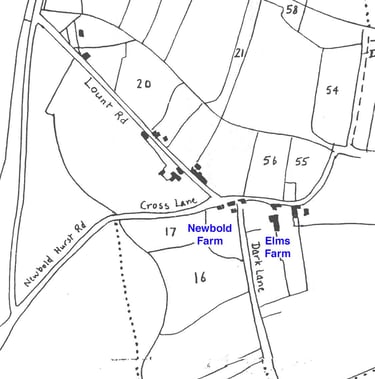

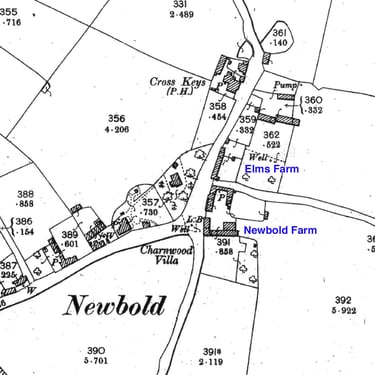

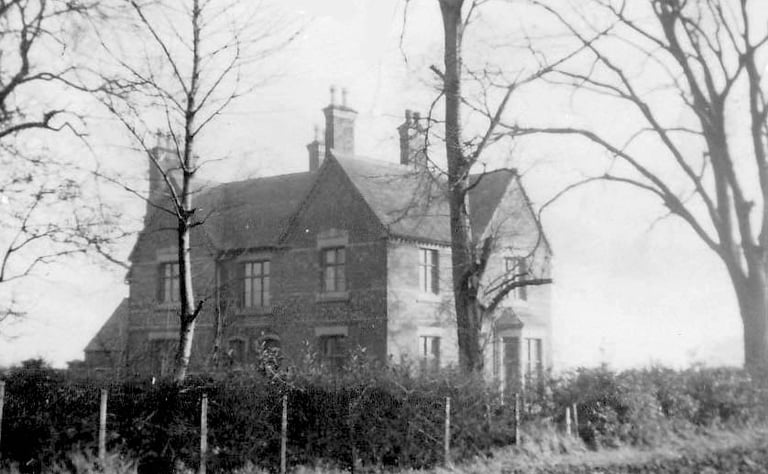

Houses and Cottages
The Vicarage
The Vicarage was built in 1855 and was home to the vicar of St Matthews Church Worthington. The Vicarage was an imposing building with high ceilings and tile floors. Christina Walmsley, daughter of the Rev Henry Dane (vicar from 1949-1972) remembers that when she was a child, the Vicarage was the only house in Newbold to have a telephone!


Laburnum Cottage
Laburnum Cottage stood on Ashby Road and was an easily recognised building. A large water tank was attached to the side of the cottage. Local children referred to this as a bomb!
Charnwood Villa
Charnwood Villa was built in 1853 and records show that Mrs Cooper was living at this residence in 1895. Who was she? Was she married to the village rent collector, Thomas Cooper?
Bushwell Cottage
Bushwell Cottage stood in Newbold Spinny, an area opposite to what is now New Lount Nature Reserve.
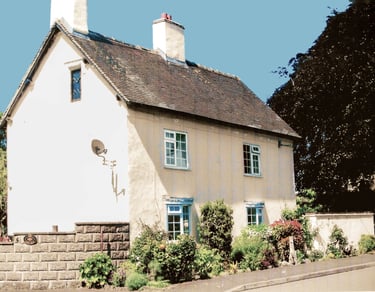



Stoneleigh
Stoneleigh was originally a barn which stood isolated to the north of the village. The building was converted into a house in 1910. It is reported that a couple of tramps were often seen in the barn and they would frighten people walking between Newbold and Worthington.
The present owner tells a story of a visitor who came to the house not knowing it had been a barn and reported that they had seen a milking maid walking through the hall. It is not known whether the barn was used as a milking parlour – perhaps it was!
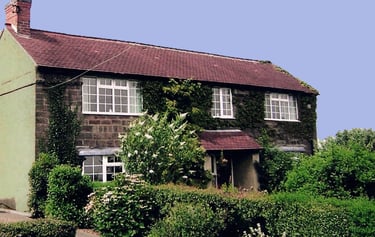

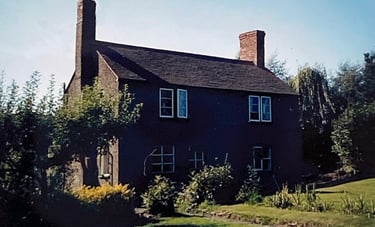

Bushwell House
It is not known when Bushwell House on Melbourne Road was built as deeds only exist from 1951 when it was sold by the Beaumont Estate to Mrs Madge Williams the sister of Frank Richards. She didn't live in the house originally as she kept the Railway Inn on the Gelsmore crossroads. The Mee family lived in the house until Madge and her husband moved in. It is thought that the beams in the walls of the house came from ships scrapped after the battle of Trafalgar in 1805! Sue and Brian Kendrick bought the house in 1978 from Jack and Frank Williams who sold it when their mother Madge Williams died.
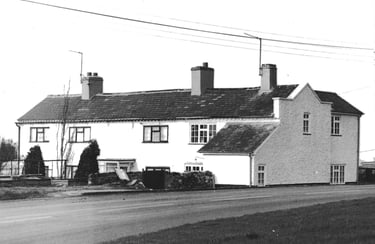

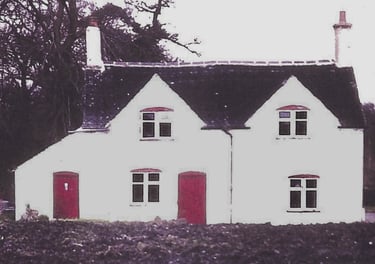

Anne's Cottage
Anne’s cottage is one of the oldest properties in the village, built around 1765, and stands at the top of Pipe Yard Lane.
Little Mary's Cottage
Little Mary’s Cottage was built in 1795, It was the home of Mary who was laundress to the Beaumont family.
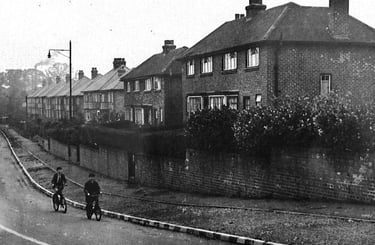

The Hodges Houses
Frank Hodges built dwellings on School Lane and Ashby Road in the 1930s to house workers from the mine (mainly management) and his family members. The houses originally had names rather than numbers.
A number of villagers remember a shop that opened next to the Cross Keys pub. The shop sold fruit and vegetables and later became a hairdressers. Do you remember this shop and the shopkeeper? Do you remember the hairdressers? Contact us if you have any information.
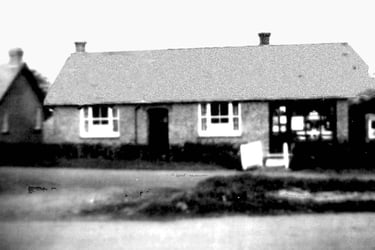

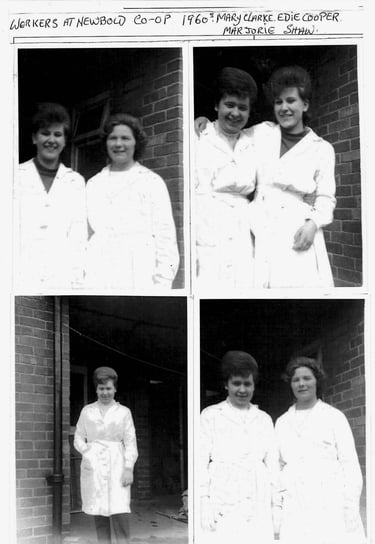

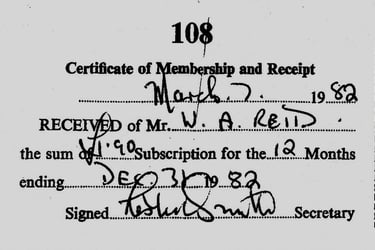

Snips Shop
William and Lill Stewart’s shop (Snip’s Shop) was located at the end of School Lane. The property was a ‘new’ bungalow which incorporated a village store. Lill ran the shop while William (also known as Snip) worked as a labourer at Newbold Pipeworks. Miners from New Lount Colliery could purchase all manner of items including cigarettes and sweets. The shop ceased trading after New Lount Colliery closed in 1968.
The Co-op
The Cooperative Society opened a shop on Ashby Road in Newbold after the second world war. The Co-op also provided the village with a laundry and dry cleaning service (items were sent to Coalville and returned to the village).
The Club
The Working Mens Club was built by Frank Hodges for use by miners, brick and pipe yard workers. It stood on School Lane and is now a private residence. A membership fee was paid annually and a membership card issued as shown in the picture.
Shops and Services
With a growing population and a thriving colliery, brickworks and pipeyard, Newbold became a bustling village and the residents and workers required goods and services. Bill Dawson (father of Rev John Dawson), had a ‘general store’ in a van which he would drive around Newbold once a week. He sold 'anything and everything' for the home, (think of 'The Tool Box' in Ashby but in a van!). If he didn't have an item he would get it for you. If you wanted to buy wallpaper, he would bring the pattern book from the decorator and take your order back to the shop. He sold tinned food, paraffin and vinegar from a cask (for which you had to provide your own bottle).
Milk was delivered daily and Bullens High Class Grocers came to the village every Wednesday. A greengrocer brought fresh vegetables from farms in Melbourne on a Saturday morning and there was a bread van from Richards’ Bakery in Coleorton. There was a meat van from Melbourne and a weekly fresh fish van. Birt’s Ice-cream was delivered from Coleorton by bicycle and the ‘pop man’ delivered bottles of Corona pop and took away the empties.
For residents who grew their own vegetables, seeds were purchased as a village consortium organised by Joe Stevenson of the Parish Council. Discounted prices were given for buying in bulk!
Water Wells and the Pump Tower
Before the installation of running water to the village, Newbold residents relied upon several wells positioned around the village. There was a well where School Lane meets Worthington Lane and Ashby Road. This well was a regular meeting place for villagers. Alf Poyser, the ‘Old Codger’ who wrote regularly in Newbold News, said that the well was used for washing purposes but it is unsure whether people used it for drinking water. The well was filled in during the early 1940s.
When Frank Hodges built houses on School Lane and Ashby Road, a pump tower was built (~1930s). The tower was fed with water pumped from the New Lount Colliery. Unfortunately, a number of residents contracted typhoid from the water and several villagers were admitted to hospital including a young boy who sadly died.
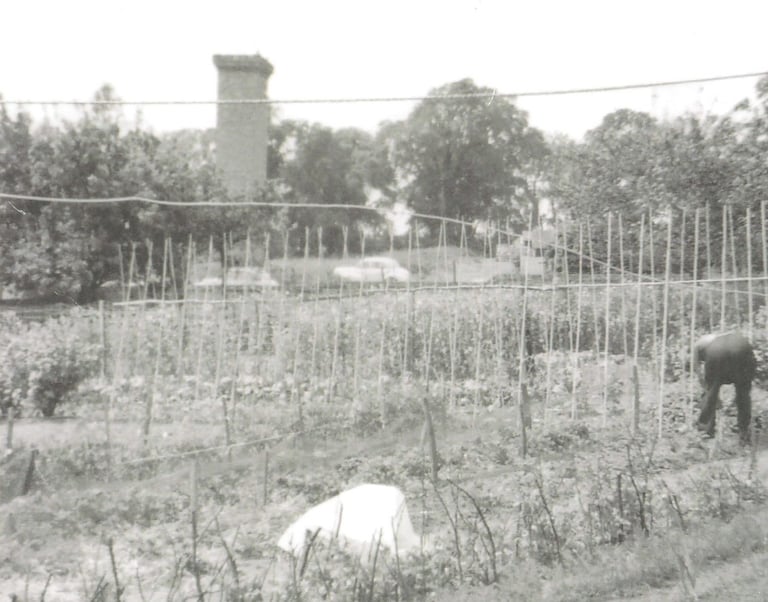

Melbourne Road residents had access to a well near Bushwell House and there was a well at the top of Pipe Yard lane in the garden of the cobbler’s cottage (Anne’s Cottage). Alf Poyser recounts that he would use a yoke and buckets to collect water from this well. There were other pumps situated at the School House and near the Cross Keys Public House.
Mains water came to Newbold when the Council built houses on Worthington Lane.
The Tank Trap
Newbold boasts a tank trap which is located on Melbourne Road just outside the village. The tank trap consisted of two metal posts erected on either side of the road. Metal cables could be stretched between the two posts to stop enemy vehicles. New Lount Colliery, which continued working through the second world war, was a target for enemy attack and should a land invasion have occurred, this trap would have provided defense from enemy vehicles approaching from the main Nottingham Road at Lount. The tank trap, which can still be seen today was constructed around 1940/41 by the Home Guard, probably in the workshops of New Lount Colliery.
